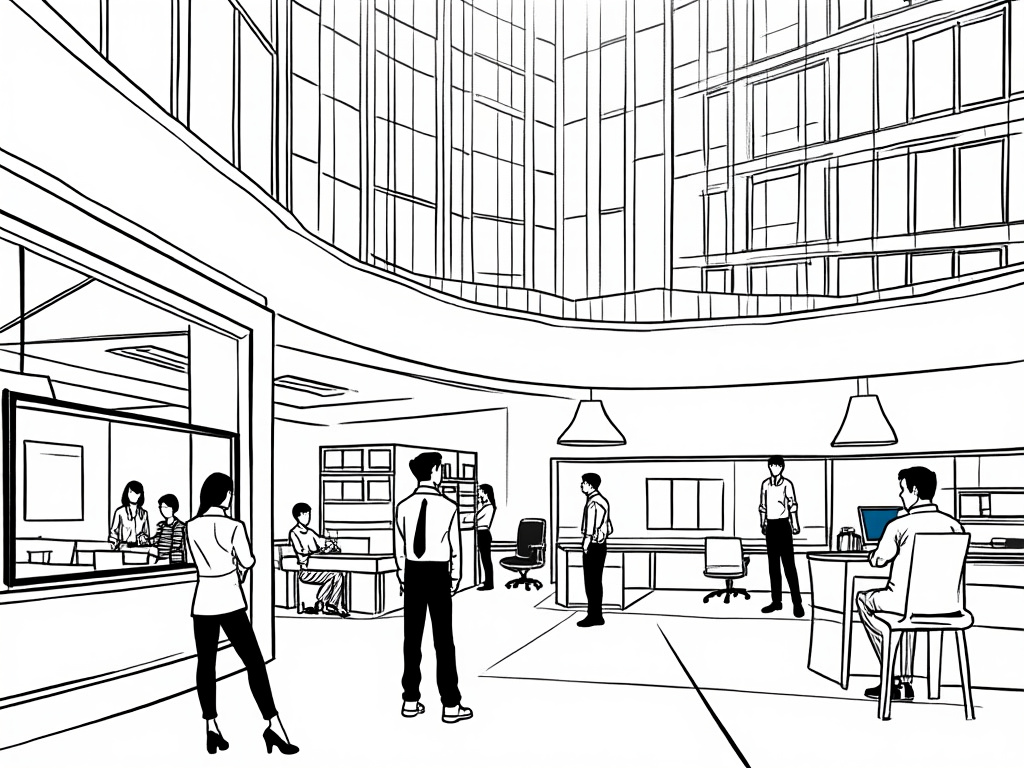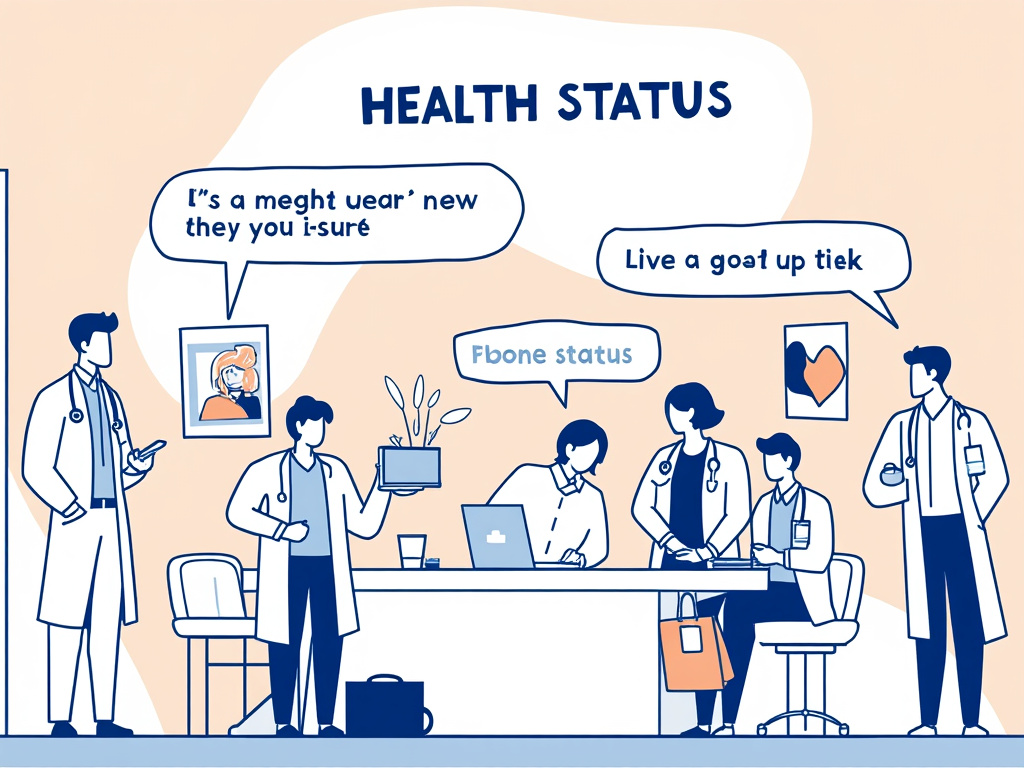
Sheikh Khalifa’s Transformative Legacy: Architect of Modern UAE
Reading time: 12 minutes
Table of Contents
- Introduction: The Dawn of a Visionary Era
- Leadership Transition: From Sheikh Zayed to Sheikh Khalifa
- Economic Transformation Under Sheikh Khalifa
- Infrastructure Development and Urban Planning
- Social Development and Cultural Initiatives
- International Relations and Diplomatic Legacy
- Personal Challenges and Leadership Continuity
- The Enduring Blueprint: Sheikh Khalifa’s Vision for UAE’s Future
- Frequently Asked Questions
Introduction: The Dawn of a Visionary Era
When Sheikh Khalifa bin Zayed Al Nahyan ascended to the presidency of the United Arab Emirates in November 2004, few could have predicted the transformative impact his leadership would have on the young federation. Taking the helm from his father, the legendary founding father Sheikh Zayed bin Sultan Al Nahyan, Sheikh Khalifa faced the formidable task of preserving a legacy while forging his own path forward.
“The legacy of our father will continue to be the beacon lighting our path,” Sheikh Khalifa remarked during his first address as president. “We shall continue his work, guided by his wisdom and values.”
What unfolded over the next 17 years was not merely a continuation but an acceleration—an era of unprecedented growth that transformed the UAE from a regional player to a global powerhouse spanning economic innovation, cultural development, and international diplomacy.
Let’s navigate through the extraordinary journey of a leader whose vision expanded skylines, whose economic strategies weathered global storms, and whose quiet diplomacy reshaped regional dynamics.
Leadership Transition: From Sheikh Zayed to Sheikh Khalifa
Early Challenges and Initial Vision
When Sheikh Khalifa assumed leadership in 2004, the UAE stood at a crossroads. The nation had built solid foundations under Sheikh Zayed, but global challenges loomed. Oil price volatility threatened economic stability, regional conflicts simmered nearby, and the path to diversification required bold, decisive action.
Consider this context: In 2004, the UAE’s GDP stood at approximately $106 billion. The economy, while growing, remained heavily dependent on hydrocarbon revenues, which accounted for nearly 40% of GDP. The population was just under 4.5 million, with nationals comprising roughly 20%.
Sheikh Khalifa’s inaugural speech outlined what would become his governing philosophy: “Our foremost priority is achieving the welfare of UAE citizens, ensuring that they receive the best education, health services, and housing facilities, allowing them to live in dignity and prosperity.“
This wasn’t just rhetoric—it became the blueprint for action. Within his first 100 days, Sheikh Khalifa initiated a comprehensive review of government services, established new mechanisms for citizen engagement, and approved substantial increases in public servant salaries and social welfare programs.
Leadership Style and Governance Philosophy
Unlike some leaders who rush to distinguish themselves from predecessors, Sheikh Khalifa embraced continuity while implementing meaningful evolution. His leadership style combined three distinctive characteristics:
- Consultative governance – Expanding the Federal National Council’s role and instituting regular meetings with tribal leaders and citizens
- Strategic delegation – Empowering key figures like Sheikh Mohammed bin Rashid Al Maktoum to drive innovation while maintaining central vision
- Quiet diplomacy – Preferring substantive outcomes over public spectacle in international relations
Dr. Abdulkhaleq Abdulla, prominent UAE political scientist, noted: “Sheikh Khalifa’s governance model might best be described as ‘evolutionary stability’—preserving core values while systematically modernizing institutions and approaches.”
This approach created space for innovation while maintaining the cultural and social cohesion vital to Emirati society. It also facilitated a uniquely Emirati form of federalism, balancing the autonomy of individual emirates with collective national development.
Economic Transformation Under Sheikh Khalifa
Economic Diversification Initiatives
Perhaps nowhere was Sheikh Khalifa’s strategic vision more evident than in economic policy. Recognizing the limitations of hydrocarbon dependence, he championed diversification not merely as an economic safeguard but as a national imperative.
The numbers tell a compelling story: Under his leadership, the non-oil sector’s contribution to GDP grew from approximately 60% in 2004 to over 70% by 2021. This transformation was guided by several landmark initiatives:
- The UAE Vision 2021, launched in 2010, which set concrete targets for economic diversification
- The establishment of sovereign wealth funds and strategic investment vehicles
- Targeted development of key sectors including aviation, tourism, logistics, manufacturing, and renewable energy
- Creation of specialized free zones with sector-specific incentives
Consider the case of renewable energy—seemingly counterintuitive for a hydrocarbon giant. Under Sheikh Khalifa’s direction, the UAE launched Masdar City in 2006, a pioneering carbon-neutral development. By 2013, the country had secured the headquarters of the International Renewable Energy Agency (IRENA), and by 2021, had built some of the world’s largest and most cost-effective solar energy plants.
“The stone age didn’t end because we ran out of stones,” Sheikh Khalifa once remarked, borrowing an industry maxim. “Similarly, we’re not waiting for oil to run out before building our future economy.”
Navigating the 2008 Financial Crisis
Sheikh Khalifa’s leadership faced its most severe test during the 2008 global financial crisis. Dubai’s rapid expansion had created significant debt exposure just as global credit markets froze. The emirate’s flagship companies faced potential defaults that threatened to undermine decades of development.
The crisis demanded decisive action. In a move that demonstrated both federal solidarity and strategic foresight, Sheikh Khalifa authorized a $10 billion bailout for Dubai in December 2009. This intervention, coupled with subsequent restructuring programs, not only stabilized the immediate situation but strengthened the UAE’s financial governance for the long term.
Dr. Nasser Saidi, former chief economist at the Dubai International Financial Centre, observed: “The federal response under Sheikh Khalifa’s leadership transformed what could have been a catastrophic setback into a catalyst for institutional reform and more sustainable growth models.”
From this crucible emerged stronger regulatory frameworks, enhanced transparency measures, and a more sustainable approach to development across all emirates—proving Sheikh Khalifa’s ability to convert crisis into opportunity.
Infrastructure Development and Urban Planning
Iconic Projects and National Symbols
The physical transformation of the UAE under Sheikh Khalifa’s leadership is perhaps the most visible aspect of his legacy. The skylines of Abu Dhabi, Dubai, and other emirates underwent dramatic evolution, combining practical infrastructure with iconic landmarks that captured global imagination.
Let’s examine some of the most significant projects completed during his presidency:
| Project | Completion Year | Investment Value (USD) | Global Significance | Strategic Impact |
|---|---|---|---|---|
| Burj Khalifa | 2010 | $1.5 billion | World’s tallest building | Global brand recognition and tourism driver |
| Sheikh Zayed Grand Mosque | 2007 | $545 million | Architectural masterpiece blending diverse Islamic traditions | Cultural focal point and religious tourism |
| Louvre Abu Dhabi | 2017 | $650 million | First universal museum in the Arab world | Cultural diplomacy and arts hub |
| Etihad Rail | Ongoing (initiated 2009) | $11 billion | National rail network connecting all emirates | Logistics enhancement and regional integration |
| Khalifa Port | 2012 | $7.2 billion | Semi-automated container terminal | Trade capacity and maritime hub development |
Beyond these landmarks, Sheikh Khalifa oversaw comprehensive development of critical infrastructure—water systems, power generation, telecommunications networks, and transportation hubs that formed the backbone of the UAE’s economic expansion.
The naming of Burj Khalifa—originally planned as Burj Dubai—in his honor following Abu Dhabi’s financial support during the 2008-2009 crisis symbolized both his personal impact and the strengthened federal bonds fostered during his presidency.
Sustainable Development Focus
As Sheikh Khalifa guided the UAE’s infrastructure boom, he increasingly emphasized sustainability—not as a concession to international pressure but as a core national interest. This approach manifested in several pioneering initiatives:
- Estidama – Abu Dhabi’s comprehensive sustainability framework introduced in 2010
- Nuclear energy development – The Barakah Nuclear Power Plant, the Arab world’s first peaceful nuclear energy program
- Water security programs – Including advanced desalination technologies and strategic reserves
- Urban planning reforms – Integrating public transportation, green spaces, and community facilities
Perhaps most emblematic was Sheikh Khalifa’s support for Masdar City and related renewable energy ventures. These initiatives positioned the UAE not merely as a consumer of sustainable technologies but as an innovator and exporter—creating new economic opportunities while addressing environmental challenges.
“We recognize that preserving our energy resources will be a foundation of sustainability for generations to come,” Sheikh Khalifa stated during the inauguration of the first phase of the Mohammed bin Rashid Al Maktoum Solar Park in 2013.
Social Development and Cultural Initiatives
Education and Healthcare Advancements
While economic and infrastructure achievements often dominated international headlines, Sheikh Khalifa consistently prioritized human development—particularly education and healthcare—as fundamental to national progress.
In education, his presidency saw substantial reform and investment across all levels:
- K-12 education overhaul through the “Education 2020” strategy
- Establishment of world-class universities through strategic partnerships (NYU Abu Dhabi, Sorbonne Abu Dhabi)
- Creation of specialized educational institutions aligned with economic priorities (Khalifa University, Dubai Institute of Design and Innovation)
- Scholarship programs sending thousands of Emiratis to top global universities
The healthcare transformation was equally impressive. During Sheikh Khalifa’s presidency, the UAE:
- Built specialized medical facilities like Cleveland Clinic Abu Dhabi and Sheikh Khalifa Medical City
- Introduced mandatory health insurance programs
- Developed medical tourism as both a service and economic sector
- Created regulatory frameworks to ensure quality and accessibility
These investments paid measurable dividends: By 2020, the UAE ranked 20th globally on the Human Development Index, life expectancy increased to 78 years, and literacy rates exceeded 95%.
Women’s Empowerment and Inclusion
Sheikh Khalifa’s approach to women’s advancement reflected his broader governance philosophy—evolutionary rather than revolutionary, respectful of cultural context while steadily expanding opportunities.
Several key initiatives stand out:
- The 2012 decree mandating women’s representation on the boards of all government entities
- Establishment of the Gender Balance Council in 2015
- Legal reforms expanding women’s rights in family law, inheritance, and employment
- Support for women’s participation in previously male-dominated sectors including military, aviation, and nuclear energy
The results were remarkable. By the end of Sheikh Khalifa’s presidency:
Women’s Participation Rates by Sector
Her Excellency Sheikha Lubna Al Qasimi, who held several ministerial positions during Sheikh Khalifa’s presidency, noted: “His Highness created an environment where merit could triumph over gender. The opportunities provided weren’t special concessions but recognition of capabilities and potential.”
International Relations and Diplomatic Legacy
Strategic Partnerships and Alliances
Sheikh Khalifa’s approach to international relations combined strategic vision with pragmatic engagement. Rather than aligning exclusively with any single power bloc, he cultivated diverse partnerships based on mutual interests and shared objectives.
Key examples include:
- Enhanced security cooperation with the United States, including significant defense purchases and joint training exercises
- Expanded economic ties with Asian powers, particularly China, India, South Korea, and Japan
- Deepened European partnerships beyond traditional allies Britain and France to include Germany, Italy, and others
- Pioneered new relationships in Latin America and Africa focused on economic development and investment
A pivotal case study in this approach was the UAE’s relationship with India. Under Sheikh Khalifa, what had historically been primarily a labor migration connection transformed into a comprehensive strategic partnership spanning defense, technology, energy, infrastructure, and cultural exchange.
When Indian Prime Minister Narendra Modi visited in 2015, he remarked: “The UAE under Sheikh Khalifa’s leadership has transformed from being a valued economic partner to a comprehensive strategic ally for India.”
Contributions to Regional Stability
Sheikh Khalifa’s regional policy reflected a commitment to stability, moderation, and Arab solidarity during an era of unprecedented turbulence. The Arab Spring uprisings beginning in 2011 presented particular challenges, requiring careful navigation between supporting legitimate aspirations while preventing destructive chaos.
The UAE under Sheikh Khalifa took several significant regional positions:
- Supporting Egypt’s stability following political transitions
- Participating in coalition efforts against extremist groups
- Providing substantial humanitarian aid throughout conflict zones
- Working toward political solutions in Yemen and Libya
- Normalizing relations with Israel through the Abraham Accords (though finalized in 2020, the groundwork was laid during his presidency)
Ambassador Yousef Al Otaiba, UAE Ambassador to the United States, characterized Sheikh Khalifa’s approach: “His Highness understood that regional stability wasn’t just about security arrangements but required economic opportunity, political inclusion, and cultural openness. UAE foreign policy reflected this holistic vision.”
Personal Challenges and Leadership Continuity
Sheikh Khalifa’s presidency faced a significant personal challenge in January 2014, when he suffered a stroke that limited his public appearances and active governance role. This situation presented a potential leadership vacuum in a region where personal authority often remains central.
What followed demonstrated the institutional resilience Sheikh Khalifa had helped build. Crown Prince Sheikh Mohammed bin Zayed Al Nahyan assumed many day-to-day responsibilities, while maintaining consistent reference to Sheikh Khalifa’s vision and authority.
This transition revealed several important aspects of Sheikh Khalifa’s leadership legacy:
- The strength of institutions he had developed that could function effectively during his reduced visibility
- The leadership pipeline he had cultivated, particularly in preparing Sheikh Mohammed bin Zayed for expanded responsibilities
- The political stability of the federation even during sensitive leadership transitions
Dr. Abdulkhaleq Abdulla observed: “Sheikh Khalifa’s greatest achievement may have been creating a system where progress continued seamlessly even during his health challenges—something remarkable in the regional context.”
When Sheikh Khalifa passed away on May 13, 2022, the smooth transition to Sheikh Mohammed bin Zayed’s leadership reflected this institutional foundation—perhaps the ultimate testament to Sheikh Khalifa’s governance vision.
The Enduring Blueprint: Sheikh Khalifa’s Vision for UAE’s Future
As we reflect on Sheikh Khalifa bin Zayed Al Nahyan’s 17-year presidency, several enduring principles emerge that continue to shape the UAE’s trajectory:
- Balanced modernization – Embracing innovation while preserving cultural identity and social cohesion
- Economic pragmatism – Leveraging existing strengths while systematically building new capabilities
- Federal solidarity – Strengthening collective national identity while respecting emirate distinctiveness
- Strategic patience – Pursuing transformative goals through sustained, methodical effort rather than abrupt changes
- Global engagement – Maintaining independence while building diverse international partnerships
These principles weren’t merely theoretical—they were demonstrated through concrete actions and measurable outcomes. During Sheikh Khalifa’s presidency:
- GDP grew from approximately $106 billion in 2004 to over $400 billion by 2021
- Non-oil sector contribution expanded from 60% to more than 70% of the economy
- The UAE established itself among the world’s top 20 economies
- International reserves grew substantially, enhancing national resilience
- Global competitiveness rankings consistently placed the UAE among top performers
Beyond these metrics, Sheikh Khalifa’s most significant achievement was perhaps the most intangible—cultivating a distinctly Emirati model of development that balanced tradition with innovation, economic growth with social cohesion, and national identity with global engagement.
As the UAE continues its journey toward its centennial in 2071, Sheikh Khalifa’s legacy provides not just a foundation but an ongoing blueprint—a set of principles adaptable to changing circumstances while remaining true to core values.
What might Sheikh Khalifa himself consider his most important legacy? Perhaps the answer lies in his own words: “The real measure of our success is not in what we build, but in the capabilities we develop in our people and the quality of life we create for them.”
By that measure, his presidency stands as a remarkable chapter in the UAE’s continuing story.
Frequently Asked Questions
What were Sheikh Khalifa’s most significant economic achievements?
Sheikh Khalifa’s most significant economic achievements include shepherding the UAE through the 2008-2009 global financial crisis, accelerating economic diversification that reduced oil dependency from 40% to less than 30% of GDP, establishing world-class sovereign wealth funds that secured financial stability, and developing new economic sectors including renewable energy, advanced manufacturing, space industry, and medical tourism. His economic vision transformed the UAE from a regional player to a global economic hub with substantially enhanced resilience to oil price fluctuations.
How did Sheikh Khalifa balance tradition and modernization?
Sheikh Khalifa masterfully balanced tradition and modernization through several approaches. He maintained strong cultural institutions and heritage preservation alongside cutting-edge development, incorporated traditional consultation practices (majlis) into modern governance structures, ensured Islamic principles remained central to social frameworks while expanding women’s opportunities and religious tolerance, and promoted architectural designs that blended historical elements with contemporary function. Rather than seeing tradition and progress as contradictory, Sheikh Khalifa positioned Emirati cultural heritage as a source of strength and distinctiveness in an increasingly globalized world.
What leadership lessons can be learned from Sheikh Khalifa’s presidency?
Sheikh Khalifa’s presidency offers several valuable leadership lessons: the power of strategic patience and long-term vision over short-term gains, the importance of building institutions that transcend individual leadership, the effectiveness of evolutionary rather than revolutionary change in maintaining social cohesion, the value of delegating authority while maintaining clear strategic direction, and the benefit of quiet, substantive diplomacy over performative gestures. Perhaps most importantly, Sheikh Khalifa demonstrated how thoughtful leadership succession planning ensures continuity of vision even through personal challenges, creating a legacy that extends well beyond any single leader’s tenure.

Article reviewed by Charlotte Ellsworth, Investment Analyst | Supporting Sovereign Wealth Fund Deals, on June 16, 2025




